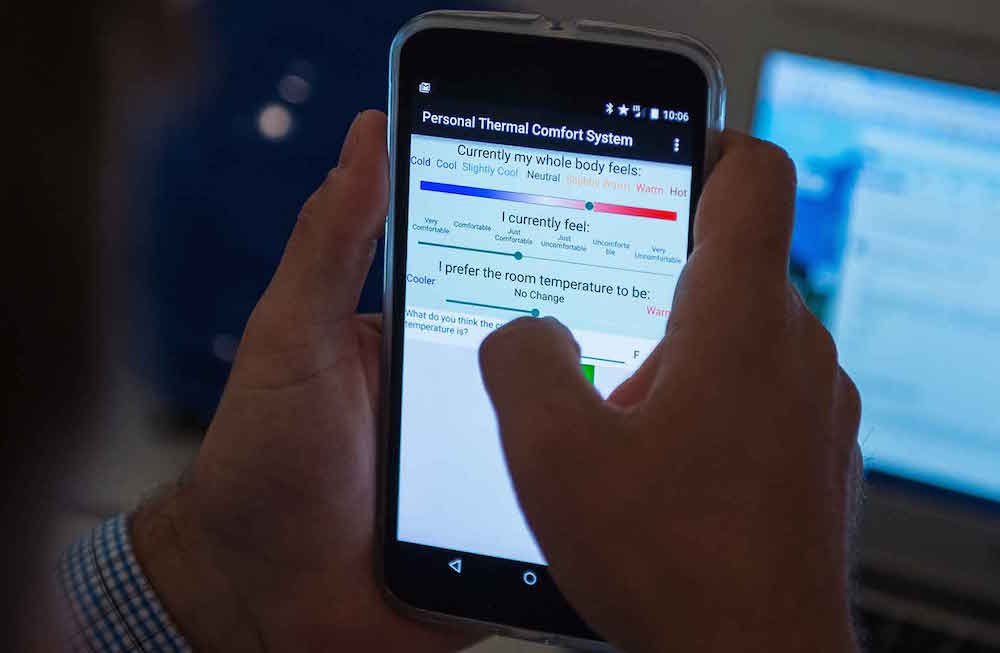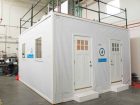
Commercial
News
Will C-Suite reveal connection between human comfort and energy systems?
October 13, 2015 - A newly constructed structure at the U.S. Department of Energy’s (DoE) National Renewable Energy Laboratory (NREL) is designed to “reveal the connection between human comfort and energy systems”.
October 14, 2015 By Anthony Capkun

To understand how individuals respond to changes in indoor air temperature, a custom-designed experimental apparatus was needed. The Comfort Suite (a.k.a. C-Suite) is an experimental environmental chamber capable of making its occupants “shiver or sweat”. It aims to facilitate the rapid development of efficient energy systems that increase human comfort and performance by simulating a range of environments to help evaluate and optimize different technologies.
Located in NREL’S Thermal Test Facility, the 10x16x16-ft structure is loaded with banks of sensors that provide data about everything from the current concentration of carbon dioxide within the room to a real-time 3-D map of all its occupants’ body positions.
“We oversized this quite a bit,” said Chuck Booten, a senior engineer at NREL whose specialties include HVAC system analysis and testing. He designed the HVAC system for the C-Suite. “In a normal house, you’d typically have two registers for a room this size, and we have 20.”
Scott Carmichael, an NREL post-doctoral research fellow and project lead for the C-Suite work, said a convergence of technologies provide new opportunities for the lab to explore ways to maintain or even enhance people’s quality of life while reducing their energy requirements. Wireless communications, the computing capabilities that come with smartphones and advanced devices for heating & cooling open “unexplored avenues to creating intelligent, adaptable and contextually aware energy systems”.
According to NREL, prior simulations have shown that as much as 40% of energy used by a building’s HVAC systems can be conserved by letting the building temperature float through a 5 to 10-degree wider range, but “that’s not likely to make the people living or working in that building happy”, so NREL is tackling the practical problem of maintaining comfort in a localized, personal way.
Research in the C-Suite asks test subjects to maintain their own comfort with simple automated controls while researchers manipulate the room across a variety of temperatures.
Grace Brown, a recent graduate of the University of Denver, and Erik Jensen, a doctoral student at the University of Colorado, are the first C-Suite volunteers. During the course of five hours inside, they are subjected to a trio of experiments and asked to periodically use a smartphone app to rate how comfortable they are as the temperature climbs. Sitting in a specially designed chair that is capable of sensing its environment and autonomously heating or cooling its occupant according to his/her preferences, Brown and Jensen eventually get the chance to put the controls to use to stay comfortable.
Comfort is subjective. Even a person who’s fine with the office temperature in the morning may find it uncomfortable by the afternoon. Trying to make an entire office of people comfortable is a major challenge. Humidity, temperature and airflow all affect thermal comfort level, as do individual factors such as metabolism and clothing, notes NREL.
Researchers are delving into new ways to keep office workers comfortable without having to ramp up heating or cooling for the entire space. ‘Personal comfort systems’—such as foot warmers and hand warmers—are among the strategies that allow someone to remain comfortable even with the building temperature as low as 61F and as high as 84F.
“Generally speaking, you’ll be able to let the building temperature float so you use a lot less HVAC energy and, instead, you use something that just conditions around a person,” Booten said.
Booten said these personal systems aren’t as efficient as a building’s HVAC system, but they don’t have to be: “You’re conditioning 1% of the space, and that’s a lot of energy savings. That’s the ultimate goal: use the HVAC system in your building less, and still keep people comfortable”.
If everyone in an office could use a personal comfort system, Booten said, the temperature of the entire office could be as much as 6 degrees cooler or warmer. “That’s a big drop in HVAC cost.”
— With files from Wayne Hicks. Photos by Dennis Schroeder, courtesy NREL.
Print this page



